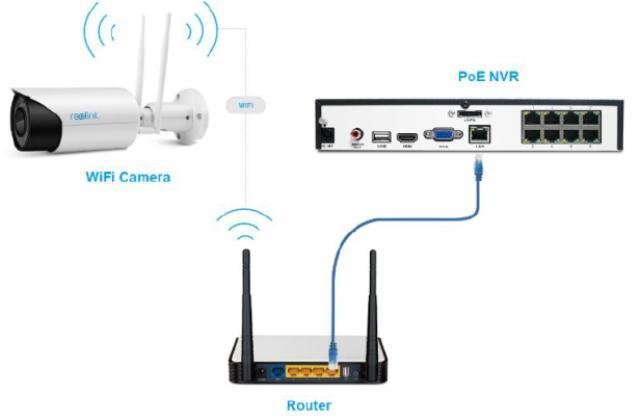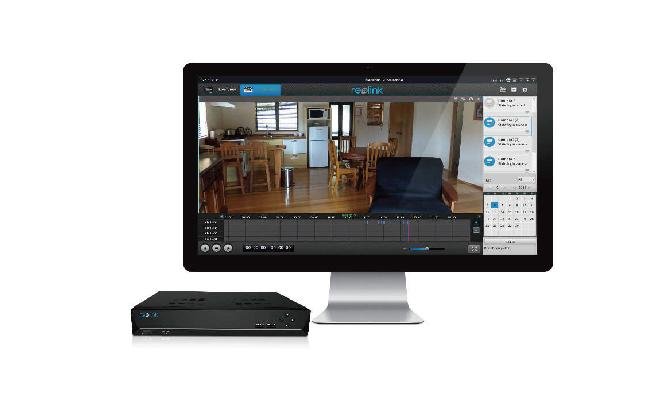No, not all Security recorders work with all Security cameras. The compatibility of a recorder with a particular camera depends on several factors, including the type of camera, the output signal format of the camera, and the input signal format of the recorder.
For example, if a camera outputs an analog video signal, such as composite video, S-video, or component video, then the recorder must have an analog video input to be able to record from that camera. However, if a camera outputs a network video signal, such as HDMI or SDI, then the recorder must have a corresponding network video input to be able to record from that camera.
Furthermore, even if a recorder and camera have compatible input/output formats, they may not be able to communicate properly if they use different communication protocols or have different capabilities.
Therefore, it’s important to check the specifications of both the camera and recorder to ensure compatibility before purchasing or using them together.
Not all CCTV cameras are compatible with all NVRs (network video recorders). Compatibility between CCTV cameras and NVRs depends on several factors such as camera resolution, video format, and signal type.
When selecting a CCTV camera for an NVR, it is important to check the camera’s specifications to ensure compatibility with the NVR. Some important factors to consider include:
It is important to note that some NVRs may be compatible with a wide range of cameras, while others may only be compatible with a specific brand or model of cameras. It is recommended to check the manufacturer’s specifications and compatibility list before purchasing a CCTV camera for an NVR.
In summary, not all CCTV cameras are compatible with all NVRs. It is important to check the specifications of both the camera and the NVR to ensure compatibility. If in doubt, it is best to consult with a professional installer who can recommend compatible cameras and NVRs for your specific needs.
Yes, it is possible to use CCTV cameras without an NVR (network video recorder), but it may have some limitations.
When CCTV cameras are used without an NVR, the video footage is stored on the camera’s built-in memory card or transmitted to a remote device such as a computer or mobile phone. However, this method of storage may have some limitations such as:
In summary, using CCTV cameras without an NVR is possible, but it may not provide the same level of functionality and scalability as a system that includes an NVR. It is recommended to use an NVR for long-term and reliable video storage, advanced features, and scalability.
If the wireless network fails without an NVR (network video recorder), the cameras will lose their connection to the network, and the live video feed and recording functionality will be impacted.
Without a network connection, the cameras will not be able to transmit their video feed to the NVR for recording or remote access. This means that any video footage captured during the network outage will not be recorded and stored for later review.
However, some cameras may have built-in memory cards that can store video footage locally, even without a network connection. In this case, the video footage captured during the network outage will be stored on the camera’s memory card.
Once the network connection is restored, the cameras will reconnect to the network and resume transmitting the live video feed to the NVR for recording and remote access.
It’s important to note that wireless networks can be less reliable than wired networks, and may be subject to interference or disruptions that can impact the camera’s connection to the network. It is recommended to have backup systems in place, such as a secondary network or a backup power supply, to ensure uninterrupted recording and access to video footage.
Yes, it is possible to connect IP cameras directly to an NVR (network video recorder) without the need for a separate network switch or router.
IP cameras use network cables to transmit video data, and NVRs are designed to receive and record video data from IP cameras. Most NVRs have built-in PoE (Power over Ethernet) ports, which allow them to provide power and network connectivity to IP cameras through a single network cable.
To connect an IP camera directly to an NVR, simply connect a network cable from the camera’s PoE port to one of the NVR’s PoE ports. The NVR will automatically detect the camera and configure it for recording.
It’s important to note that the number of cameras that can be directly connected to an NVR depends on the NVR’s available PoE ports and power capacity. Some NVRs may have limited PoE ports or power capacity, which may limit the number of cameras that can be connected directly. In such cases, a separate network switch or router may be needed to expand the network capacity.
In summary, it is possible to connect IP cameras directly to an NVR using PoE technology, which simplifies the setup process and eliminates the need for a separate network switch or router. However, the number of cameras that can be directly connected depends on the NVR’s PoE ports and power capacity.
an IP camera system.
It is not always necessary to connect an NVR (network video recorder) to a router, but it can provide some benefits.
If the NVR and IP cameras are on the same local network, the NVR can communicate directly with the cameras without the need for a router. In this scenario, the cameras and NVR can be connected to the same switch or hub using Ethernet cables, and the NVR can assign IP addresses to the cameras using DHCP (Dynamic Host Configuration Protocol). This is known as a “peer-to-peer” or “closed-circuit” network.
However, connecting the NVR to a router can provide several advantages, such as:
In summary, while it is not necessary to connect an NVR to a router, doing so can provide several advantages such as remote access, network security, and expandability. It is recommended to consult with a professional installer to determine the best network setup for your specific needs.

It is not always necessary to connect an NVR (network video recorder) to a router, but it can provide some benefits.
If the NVR and IP cameras are on the same local network, the NVR can communicate directly with the cameras without the need for a router. In this scenario, the cameras and NVR can be connected to the same switch or hub using Ethernet cables, and the NVR can assign IP addresses to the cameras using DHCP (Dynamic Host Configuration Protocol). This is known as a “peer-to-peer” or “closed-circuit” network.
However, connecting the NVR to a router can provide several advantages, such as:
In summary, while it is not necessary to connect an NVR to a router, doing so can provide several advantages such as remote access, network security, and expandability. It is recommended to consult with a professional installer to determine the best network setup for your specific needs.
Yes, it is possible to mix different types of security cameras together in the same system, but it may require additional equipment and planning.
Different security cameras have varying specifications, including resolution, lens type, and video format, which can affect the compatibility and performance of the system. Therefore, it is important to consider the following factors when mixing different security cameras:
In summary, mixing different types of security cameras is possible, but it requires careful consideration of compatibility, resolution, lens type, video format, wiring, and power. It is recommended to consult a professional installer to ensure that the system is properly planned and installed.

Yes, it is possible to use your computer as a security camera system. There are software-based solutions available that allow you to turn your computer into a video surveillance system by using one or more webcams or IP cameras.
To set up a security camera system on your computer, you need to download and install a suitable video surveillance software. There are many options available, both free and paid, that provide various features such as motion detection, scheduled recording, and remote access.
Once you have installed the software, you can connect your webcams or IP cameras to your computer and configure them in the software. The software will then allow you to view live video feeds from the cameras and record footage to your computer’s hard drive.
Some of the benefits of using your computer as a security camera system include:
However, using your computer as a security camera system may have some limitations, such as limited storage capacity and processing power, which can affect the performance of the system. Additionally, using a software-based solution requires some technical knowledge and configuration, which may not be suitable for all users.
